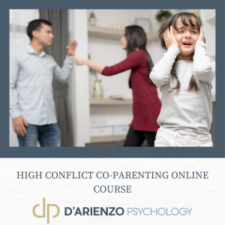- HOME
- PSYCH SERVICES
- BUSINESS & PERFORMANCE PSYCHOLOGY
- CLINICAL, COUPLES, & FAMILIES
- ADHD Treatment & Evaluation Services
- Anger Management
- Anxiety Treatment & Evaluation Services
- Borderline Personality Treatment Services
- Cognitive Behavioral Therapy (CBT) Self-Help
- Couples Counseling and Marital Therapy
- Consent for Psychological Services for Minors Post-Divorce
- Depression Treatment Services
- Infidelity Recovery
- Jacksonville Counseling and Psychology
- Military Psychology & Tricare
- Narcissistic Personality Treatment Services
- Online Counseling
- Psychoeducational Testing
- Psychological Testing and Assessment
- Psychotherapy & Counseling
- FORENSIC PSYCHOLOGY & EXPERT TESTIMONY
- LIFE COACHING & EXECUTIVE COACHING
- PSYCHOLOGICAL PUBLIC DISABILITY QUESTIONNAIRES (DBQ)
- ONLINE COURSES
- Our Partnership Begins When You Purchase an Online Course
- Get to Know Dr. D’Arienzo, Relationship Expert
- Florida Premarital Preparation Online Course
- Georgia Premarital Education Online Course
- TwogetherinTexas Premarital Online Course
- Tennessee Premarital Preparation Online Course
- Minnesota Premarital Education Course Online
- Oklahoma Premarital Counseling Online Course
- South Carolina Premarital Preparation Course
- West Virginia Premarital Education Course
- Online Marriage and Relationship Tune Up Course
- Florida DCF Certified Parent Education and Family Stabilization Online Course
- Georgia Qualified Parent Education and Family Stabilization Online Course
- Texas Qualified Parent Education and Family Stabilization Online Course
- High Conflict Co-Parenting Online Certificate Course (8 Hours)
- Online Anger Management Four Hour Course (Level 1)
- Online Anger Management Eight Hour Course (Level 2)
- Sexual Harassment Online Training
- MMPI/GUARD/LEO
- CPI Police and Public Safety Assessment
- G License Psychological Testing
- Online Psychological Testing for Armed Security Guards and Personal Protection Officers
- MMPI Texas Level III CSO and IV PPO Psychological (ONLINE)
- Requirement for Texas Security License Applicants: MMPI Evaluation
- Level 3 Security Guard New Mexico Online MMPI Psychological Evaluation
- TEAM
- SOCIAL MEDIA/BOOKS
- APPT REQUEST
Contemporary Models of Conflict Resolution in Divorce
Posted by: Dr. Justin D'Arienzo, Psy.D., ABPP
At D’Arienzo Psychology, we provide a great number of divorce related conflict resolution services whether it be couples therapy for infidelity, anger management, reunification therapy, parental alienation therapy, divorce mediation, divorce therapy, parenting coordination, and/or resolving other types of relationship disputes. I understand most of the psychological principles from a psychologist’s perspective when conducting this type of work but was curious to discover what our UNF intern, Kaela Robertson, could find from the research regarding contemporary models of conflict resolution and this is what she found.
Summary of Divorce Conflict Resolution Models
“Conflict is a process in which one party perceives that its interests are being opposed or negatively affected by another party” (Wall & Callister, 1995). Naturally, conflict is very common during and after divorce. Johnston (1994) concluded that there are three dimensions of conflict within divorce. The first dimension of conflict is the domain dimension. These are disagreements about various kinds of divorce issues, such as financial support, methods of raising the children, division of property, custody and access to children. The second dimension of conflict is called the tactics dimension. Tactics are “the manner in which divorcing couples informally try to resolve disagreements.” Individuals may do so by avoiding each other and the issues. They may also try verbal reasoning and aggression or physical coercion and aggression. Tactics can refer to ways divorce disputes are “formally resolved by the use of attorney negotiation, mediation, litigation, or arbitration by a judge.” The final dimension of conflict within divorce is the attitudinal dimension. This refers to “the degree of negative emotional feeling or hostility directed by divorcing parties toward each other.” It may be covertly or overtly expressed.
There are many models of conflict resolution for a variety of situations, from channels of distribution in a contract (Dant & Schul, 1992) to ethnic wars (Kaufman, 2006). Littlefield, et. al. (1993) decided that a win-win solution view is most conducive to conflict resolution. This model is more of a cycle that begins with developing expectations for win-win solutions for both parties followed by defining the issues. Both parties must then explain their concerns and understand the other party’s concerns, only then can brainstorming creative options begin. Next, both parties develop their best alternative to be negotiated and combine options into win-win solutions. If an agreement is reached both parties must jointly acknowledge the agreement. If not, they then return to the alternative to be negotiated. It is then necessary to redefine remaining ideas of and analyze reasons for the disagreement. Finally, both parties must breakdown the issue and redefine the issue to reach a mutual conclusion.
Davidson & Wood (2004) call their model the Conflict Resolution Model-Australia (CRM-A) which also agrees with the win-win solution view. Their model consists of four main stages. The first stage is developing expectations for win-win solutions. During this stage there is “cooperative problem solving with a view of arriving at a mutually satisfactory conclusion.” This is followed by defining each party’s interests which consists of expressing one’s own needs without being argumentative or threatening. Next, both parties must brainstorm creative options to make sure both parties have what they want. The last stage is combining said options into win-win solutions to ensure both parties are satisfied.
The Dual-Concern Model by Gabrielidis et. al. (1997) highlight the importance of one’s “concern for their own outcomes and their concern for the outcomes of others.” There are four ways to resolve conflict using this model. The first way is accommodation. This is based on a lose-win ideology of “sacrificing one’s own goal to satisfy the needs of others.” Another way to resolve conflict is avoidance. During avoidance, one party allows the conflicts to go unresolved or they permit the other party to take responsibility for solving the conflict. A third way to resolve conflict is by competition. Naturally, competition has the basis of a win-lose ideology. It is an attempt to maximize one’s own outcomes while disregarding the costs to other party. Finally, with collaboration, one tries “integrate the needs of both parties into a solution that will maximize the interests of both.” This is based on a win-win ideology.
Considering parenting during divorce, Gordon (1970) developed the Parenting Effectiveness Training model (PET). In this version of conflict resolution, both parents define the problem in terms of need then generate workable solutions. Once the solutions are clear, they are then evaluated. Parents then decide on a mutually acceptable solution, implement that solution and evaluate it at a later date to access if it is working correctly. Dant & Schul (1992) believed that conflict resolution depended on cooperation and trust between all parties involved. Once trust is established, information about the conclusion to be reached is assembled. Conflict may then be resolved by using persuasion, bargaining or politics, which includes a third-party to aid in negotiations. There must be understanding between all parties that new alternatives are constantly in rotation.
According to Sanderson & Karetsky (2002), once conflict is detected in dating relationships, spending more time together, open communication and self-disclosure and high levels of social support all help to mitigate the issues of both parties. Kaufman (2006) believe that “acknowledgement or truth-telling on both sides”, as well as changing “their understanding of their own identity and that of their adversary” to a more positive view are the first steps to resolving conflict within ethnic wars. Both sides then settle for “partial justice” when it comes to punishment of the other party. Finally, both parties “agree to build a new more positive relationship.”
References
Dant, P. R., & Schul, L.P. (1992). Conflict resolution processes in contractual channels of
distribution. Journal of Marketing, 56, 1, 38-54.
Davidson, R.J. (2004). A conflict resolution model. Theory into Practice, 43, 1, 6-13.
Gabrielidis, C., Stephan, G. W., Ybarra, O., Pearson, M. D. S. V., & Villareal, L. (1997).
Preferred styles of conflict resolution mexico and the united states. Journal of Cross-
Cultural Psychology, 28, 6, 661-677.
Gordon, T. (1970). Parent effectiveness training: the tested new way to raise responsible
children. New York: Plume Books.
Johnston, R. J. (1994). High-conflict divorce. Children and Divorce, 4, 1, 165-182.
Kaufman, J.S. (2006). Escaping the symbolic politics trap: reconciliation initiatives and conflict
resolution in ethnic wars. Journal of Peace Research, 43, 2, 201-218.
Littlefield, L., Love, A., Peck, C., & Wertheim. E.H. (1993). A model for resolving conflict:
some theoretical, empirical and practical implications. Australian Psychologist, 28, 2, 80-85,
doi: 10.1080/00050069308258880.
Sanderson, A. C., & Karetsky, H. K. (2002). Intimacy goals and strategies of conflict resolution
in dating relationships: a mediational analysis. Journal of Social and Personal Relationships,
19, 3, 317-337.
Wall, A. J. Jr., & Callister, R. R. (1995). Conflict and it’s management. Journal of Management,
24, 515-558. Doi: 10.1177/014920639502100306.





